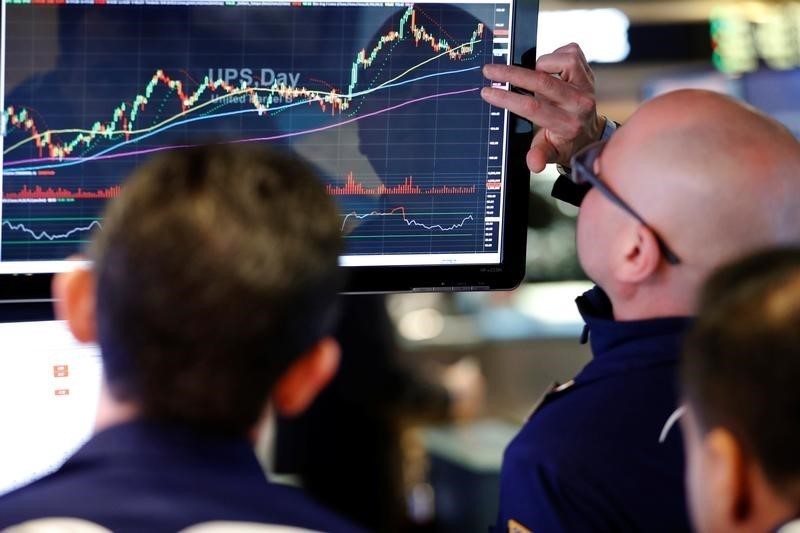By Saqib Iqbal Ahmed
NEW YORK (Reuters) - Soaring U.S. share prices and plunging market volatility measures may paint a picture of optimism, but there are signs in the equity options market that investors have started to question how long this goldilocks period can last.
The post-election share rally has quieted the CBOE Volatility Index (VIX), the most the widely followed barometer of expected near-term stock market gyrations. Its record lows highlight anemic hedging demand at the broad index level.
Away from this view of the market, however, investors have increased bets over the last two weeks with more protective options trades on a more granular, or sectoral level.
"Many investors are looking at the low levels of implied volatility and arguing that it is simply unsustainable given the amount of political and economic uncertainty," said Alex Kosoglyadov, director of equity derivatives at BMO Capital Markets in New York.
On Wednesday, the VIX closed at 11.45. It has closed below this level only 3.5 percent of the time over the last two decades.
"The thought is that the market does not even need to really sell off in order for volatility to pick up," Kosoglyadov said.
Investors are expressing this view by buying VIX calls and call spreads, he said, noting these allow for gains from higher volatility.
The 10-day moving average of VIX calls-to-puts, a gauge of strength of investors' expectation for increased volatility, hit 3.6 on Feb. 2, the highest since the Nov. 8 U.S. presidential election, per options analytics firm Trade Alert.
The strength of demand for volatility protection has driven hedging costs, as measured by the VVIX index (VVIX), to the highest level since mid-November.
TARGETED APPROACH
Traders are expressing caution elsewhere as well.
"We've noted a recent uptick in seemingly cautious sentiment with regard to valuations and the belief that investors may have become overly ebullient in forecasting the tangible impact of the new administration's policies," said Christopher Jacobson, derivatives strategist at Susquehanna Financial Group in New York.
The Technology Select Sector SPDR Fund (P:XLK) and the Financial Select Sector SPDR Fund (P:XLF), in particular, have attracted notably defensive trading.
The post-election rally boosted the financial fund's shares to a nine-year high, while the technology fund is at the highest since the dot-com bubble in 2000.
Investors' preference for protection against volatility at the single-stock and sector level, rather than the broad index level, may have to do with the decline in sector and stock correlation.
Three-month realized correlation of all 500 stocks in the S&P 500 index, a measure of how much stocks have been moving in unison, has fallen to lows rarely seen outside of the tech bubble, BofA Merrill Lynch Global Research said in a note on Tuesday.
Investors are betting on swings in individual stocks and sectors rather than on an upheaval in the broad market.

"As a result of the low correlation investors are definitely looking at options on individual stocks and/or sector ETF products to get more direct exposure in some cases," Jacobson said.